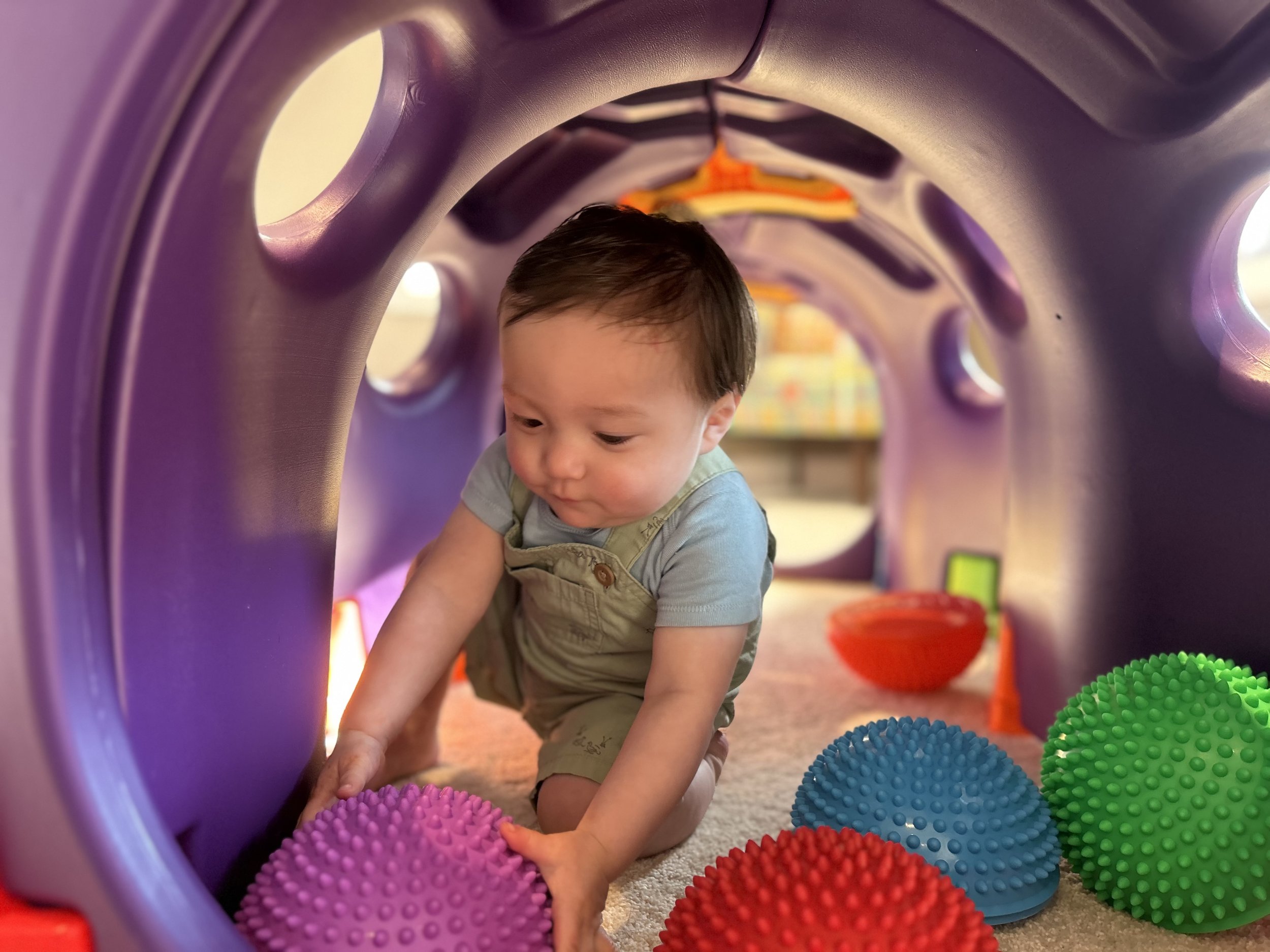The sensory gym is a key part of my therapy space. With tools like a swing, crash pad, ball pit, tunnel, slide, and trampoline, children receive the sensory input they need to feel regulated. For all children - especially those on the autism spectrum - regulation is a critical foundation for communication and learning. My sensory gym supports vestibular, proprioceptive, tactile, and visual input so that children are better prepared to participate in child-led, play-based speech-language therapy.
THE sensory gym
Why a Sensory Gym?
Communication and regulation go hand-in-hand. For many children, especially those who are
neurodivergent, sensory input plays a key role in helping them feel calm, focused, and ready to engage.
My sensory gym provides a safe and supportive space for children to move, explore, and regulate before,
during, or after therapy sessions.
What’s Inside
The sensory gym includes equipment that offers vestibular, proprioceptive, tactile, and visual input.
These tools are not just fun—they’re purposeful.
Swing, trampoline, slide & tunnel – promote movement, balance, and body awareness
Crash pad & ball pit – support calming deep pressure input
Busy board & fidgets – offer tactile exploration and fine motor engagement
Visuals, lighting, & cozy spaces – help children who benefit from lower stimulation environments
How It Supports Communication
A regulated child is a connected child. When children feel safe and supported in their bodies, they are better able to play, interact, and take communication risks. For some, movement is what opens the door to shared attention and language learning. The sensory gym helps us meet children where they are—whether that’s through jumping, swinging, or lying in a quiet corner with a favorite toy.
Individualized Use
Some kids move first and talk later. Others start with a story in the swing. The gym is used flexibly,
depending on your child’s interests, needs, and therapy goals. It’s not a reward or a break—it’s an
integrated part of the therapy process.




